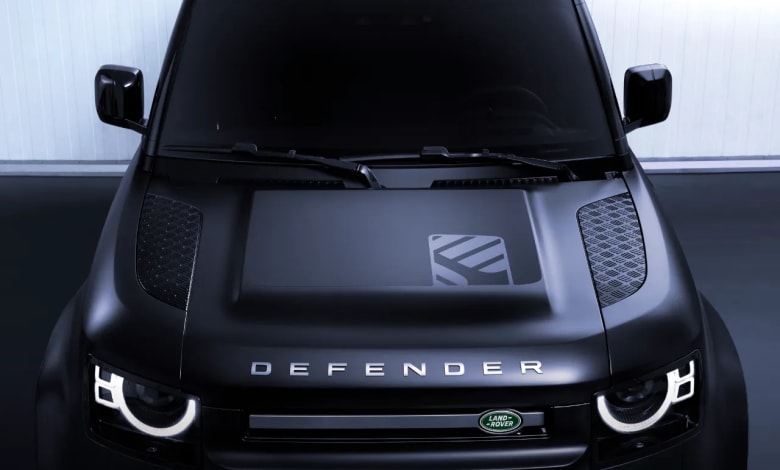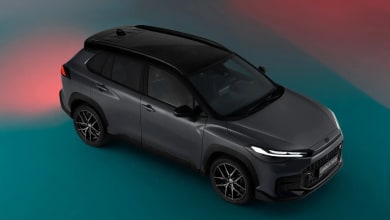
Land Rover has launched no less than 3 new editions for its Defender off-road model. Thus, the off-road SUV is now available in Outbound, V8 and County Pack versions for the 130 variant. The first version transforms the model into a luxury off-roader, while the second version brings a 500 hp V8 engine for the first time.
Defender Outbound
The new Defender Outbound edition transforms the Defender 130 model into a luxury off-roader1. It is available only for the Defender 130 variant and comes with a new exterior package that gives the model a more robust character. The package includes a Shadow Atlas Matt black paint for the bumper and grille, along with side air intakes painted in anthracite.
The roof bars with small ladders on the sides are also added here1. Customers can choose up to 4 exterior colors: Fuji White, Santorini Black, Carpathian Grey, and Eiger Grey1. The color palette also includes glossy black 20-inch wheels or matte black 22-inch wheels.
The new luxury edition is offered exclusively in the 5-seat configuration1. For the interior, customers can choose between Windsor leather upholstery or durable Resist textile material1. Regardless of the chosen upholstery, it is painted in Ebony black, as well as the roof lining and dashboard facades1. The model comes equipped with several exclusive features such as durable rubber carpets, new storage spaces and a luggage separator net.
The Outbound edition is available with two engines: a 400hp P400 gasoline engine and a 300hp D300 diesel engine.
A V8 Engine
The second new edition brings, for the first time for the new Defender, a V8 engine. Thus, the Defender 130 V8 edition brings a 5.0-liter supercharged engine capable of delivering 493hp and a torque of 610 Nm. The most powerful version of Defender accelerates from 0 to 100 km/h in 5.7 seconds.
The new version can be distinguished by the four exhausts mounted under the rear protection shield, along with emblems with the inscription V8 and stoplights with a darker tint. The new Defender V8 can be painted in Carpathian gray or Santorini black colors, and it also receives LED Matrix headlights, a sliding panoramic roof painted in black, smoked windows and 22-inch matte black rims.
The interior is finished in black Windsor leather, combined with Dinamica suede and Robustec fabrics. As for equipment, Defender V8 receives heated and ventilated front seats, adjustable in 14 directions and with memory. The steering wheel, wrapped in suede leather, is also heated, and the model also receives: automatic 4-zone climate control, heated seats including for the third row and air-conditioned for the second row, Meridian audio system, Heads-Up Display, air purification system from the cabin and an interactive screen for the driver.
And that’s not all because Defender V8 receives an 11.4-inch central screen with a system compatible with Apple CarPlay and Android Auto.
Finally, we also have a wireless charger in the central console, as well as AI-based voice command with integrated Amazon Alexa.
Exterior County Pack
The latest new edition is called County Pack and is a visual package available exclusively for the Defender 110 version. The package brings special graphics with the County inscription visible on the doors, along with 20-inch alloy rims that have a similar appearance to steel rims. With this package, Defender County Pack can be painted in Fuji white, Santorini black or Tasman blue, with the roof painted in contrasting colors.
And in this edition we have Windsor leather upholstery inside, but other upholstery is also available, such as Grained leather, Acorn or Lunar leather and Resist textile material.
The 3 new editions of Land Rover Defender will be available starting in the second half of 2023.


















